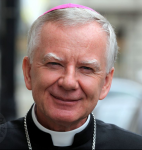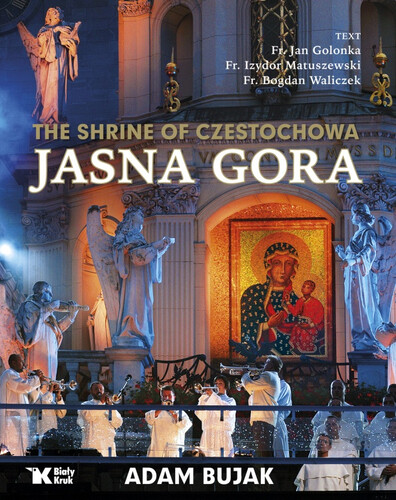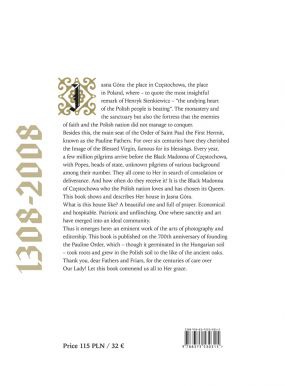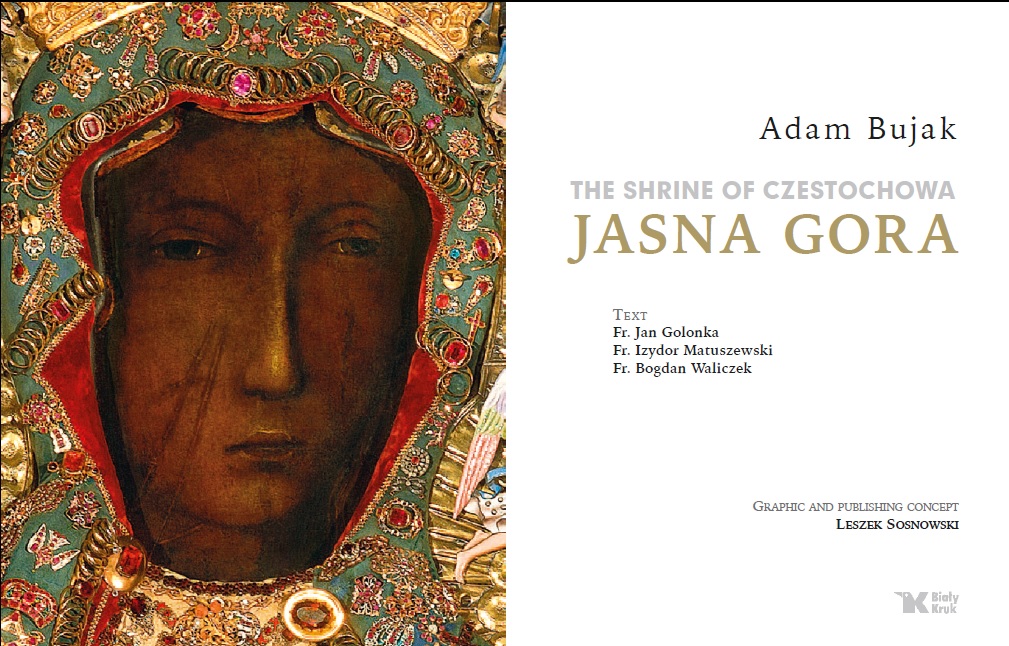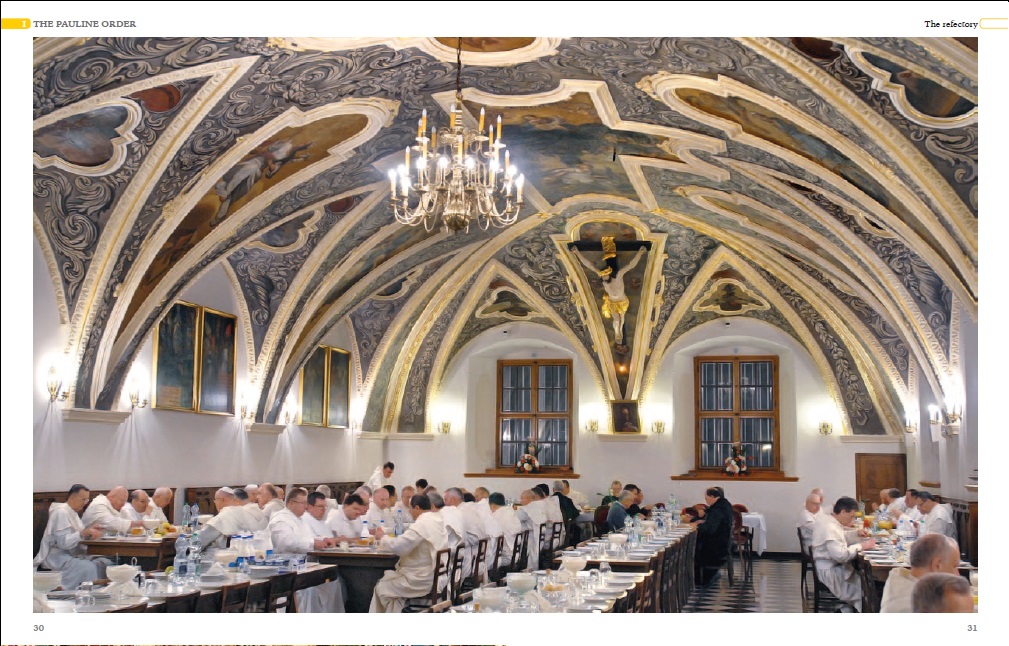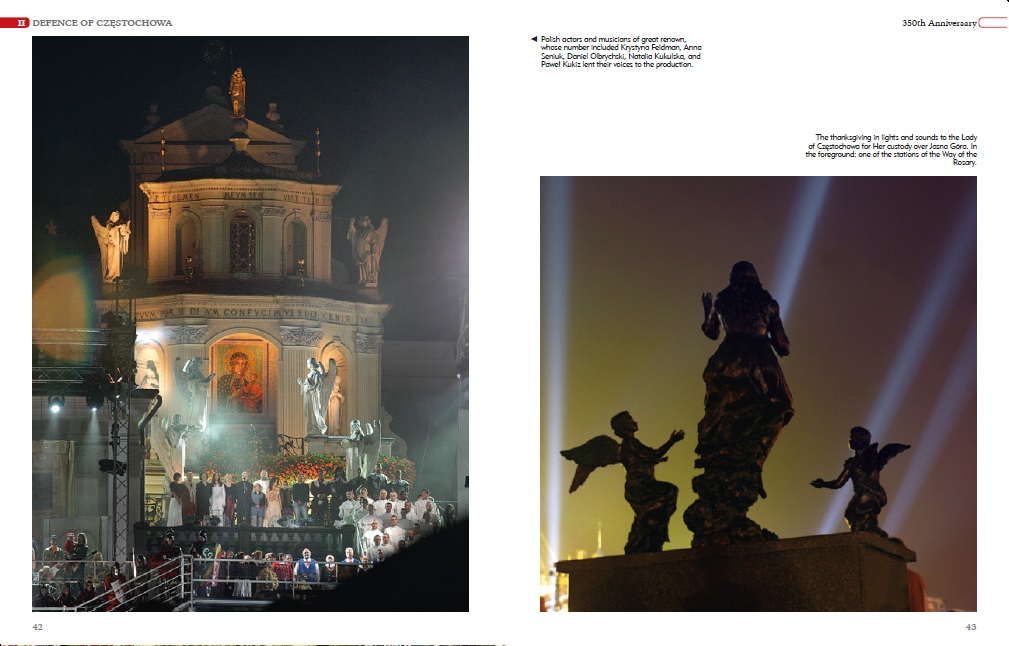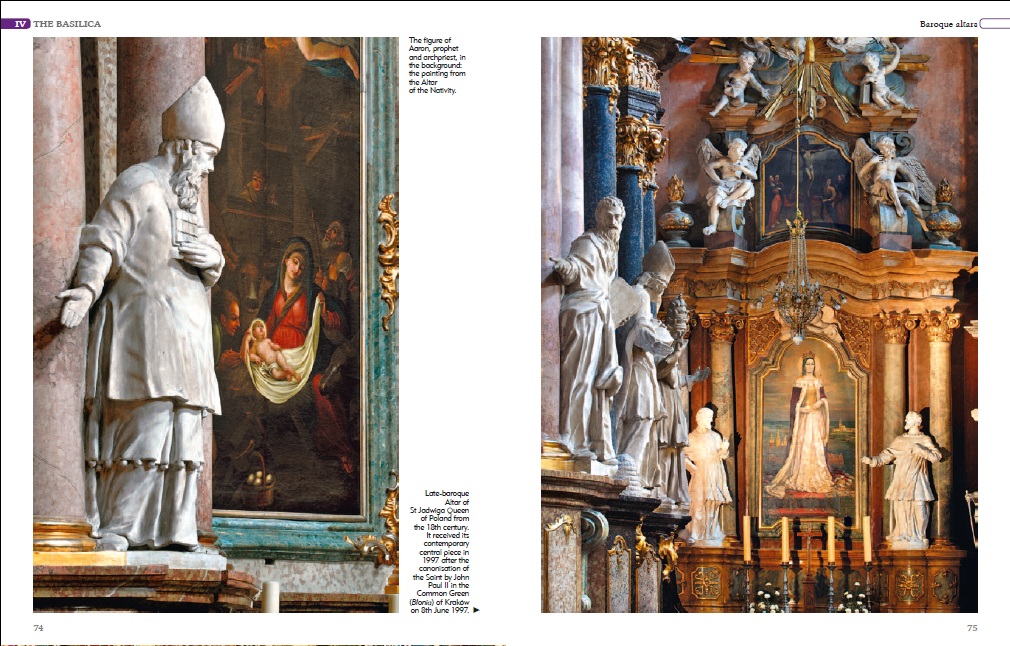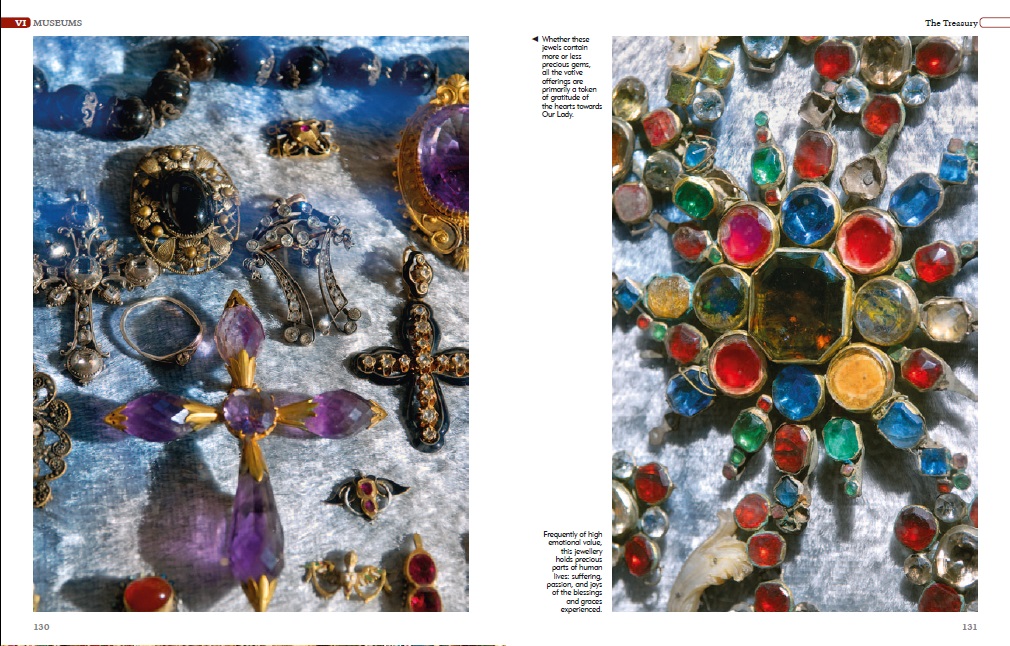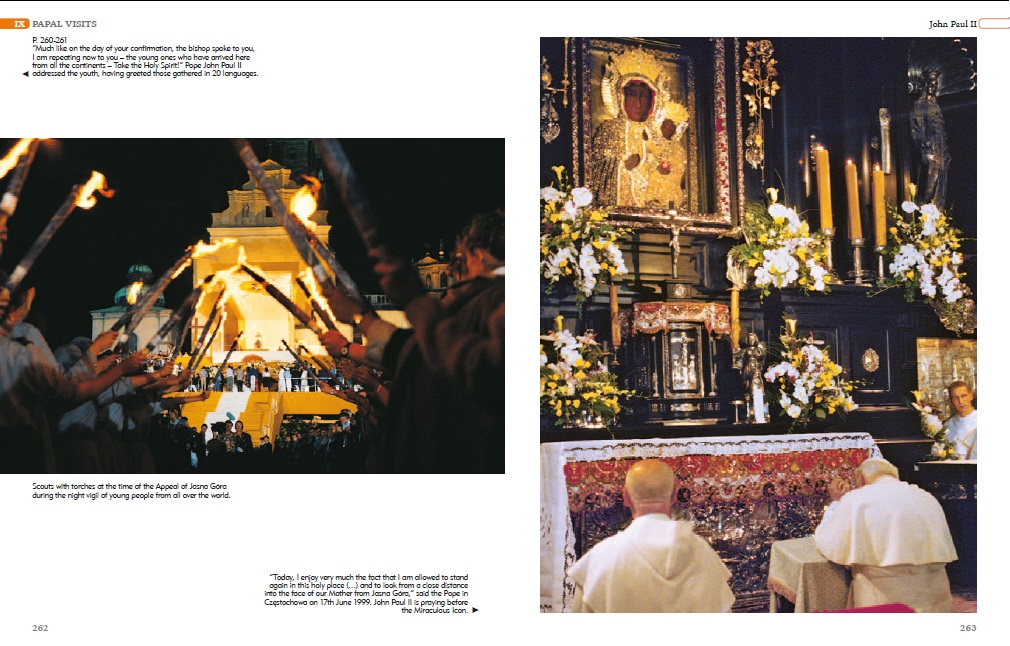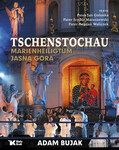Jasna Góra. Częstochowa (ang) // Jasna Gora. The shrine of Czestochowa.
| liczba stron: | 320 |
| obwoluta: | tak |
| format: | 235x300 mm |
| papier: | 170 g kreda błysk |
| oprawa: | twarda lakierowana, złocenia |
| data wydania: | 27-05-2008 |
| ISBN: | 978-83-7553-031-5 |
 dodaj do przechowalni
dodaj do przechowalni
Jasna Góra, miejsce w Częstochowie, miejsce w Polsce, gdzie - jak to pięknie wyraził Henryk Sienkiewicz - bije nieśmiertelne serce polskiego ludu. Klasztor, sanktuarium, ale i twierdza, której nie zdołali pokonać wrogowie wiary i narodu polskiego. Także główna siedziba Zakonu Świętego Pawła Pierwszego Pustelnika, czyli paulinów. Już od ponad sześciu wieków opiekują się oni obrazem Matki Bożej, który słynie cudownymi łaskami. Do Czarnej Madonny przybywa co roku kilka milionów pielgrzymów z całego świata; a wśród nich i papieże, i głowy państw, i nikomu nieznani pątnicy przeróżnych stanów. Wszyscy szukają u Niej pociechy albo i ratunku - i jakże często znajdują! To Czarną Madonnę z Częstochowy naród polski ukochał i wybrał na swoją królową. Jej dom, Jasną Górę, pokazuje i opisuje ta księga.
Jakiż to dom? Rozmodlony i piękny. Gospodarny i gościnny. Patriotyczny i niezłomny. Dom, w którym świętość i sztuka stały się idealną wspólnotą. I tak właśnie widzimy go w tym albumie, wybitnym dziele sztuki fotograficznej i edytorskiej. Ukazuje się on w 700-lecie powstania zakonu paulińskiego, który zrodził się na ziemi węgierskiej, ale na polskiej rozrósł niczym prastary dąb. Dzięki wam, drodzy Ojcowie i Bracia, za tę wieki trwającą opiekę nad naszą Panią! A ta księga niech poleca nas wszystkich Jej dobroci.
1. The Pauline order
2. Defence of Częstochowa
3. Millennium time
4. The Basilica
5. The Fortress
6. Museums
7. The Library
8. Religious festivals
9. Papal visits
10. Winter in the Sanctuary
11. Sub Tuum praesidium
1982 Paulines celebrated the 600th anniversary of foundation of the Jasna Góra Monastery by Prince Ladislaus Opolczyk (Władysław Opolczyk). In the year 2008, we celebrate – with no lesser involvement, and scientific and artistic programme – the 700th anniversary of existence of the Order of St Paul the First Hermit (Pauline Fathers). Thus the Jasna Góra (Latin: Clara Mons) sanctuary has continued for over six centuries, and the monastic family who cherish the sanctuary have continued for exactly seven centuries. These dates stand very close to each other, and despite the fact that the Częstochowa monastery is younger than the Order itself by a few decades, it is difficult to place any major chronological divide between the two. The history of the Order cannot be clearly separated from the history of the Jasna Góra Monastery. Although the monastic centre founded on the hill by the city of Częstochowa was to be only one of the many, both the tides of history and the presence of the miraculous painting of Our Lady quickly made the monastery, founded by Prince Ladislaus Opolczyk, a major landmark, the symbol, the ‘capital’ of the entire Order. This proved especially true and important after the magnificent Hungarian monasteries fell into ruin, destroyed by the Turkish onslaught early in the 16th century. When in the following century, Poles would increasingly often become generals of the entire Order, ‘the capital character’ of Jasna Góra was slowly sealed. Today in Jasna Góra, we can marvel at the paintings illustrating the history of the entire Pauline Order. They originated in the 17th century, when the awareness that the walls of the monastery were to protect what the Order found most important was already ripe. Therefore, it is an obvious conclusion that an opportunity posed by this year’s anniversary of special importance to the entire Order, encourages us to have another look at the ideological and artistic heritage of Jasna Góra – the uncontested ‘capital’ of Paulines from Europe and from all over the world.
The Icon
As the notions of ‘Paulines’ and ‘Jasna Góra’ seem to be inseparable, so are the notions of sacrum and ars in Jasna Góra. In the bygone centuries, the church approached art in a manner that was as open as practical. Works of art played ancillary role towards the liturgy and pastoral practice. Yet there were also such occasions when the object of veneration – be it an image or a relic – would acquire an exceptional artistic setting. There was something even more unusual that took place in Jasna Góra. The miraculous painting of Mother of God, bequeathed to Paulines soon after Prince Ladislaus Opolczyk completed his foundation, had such an exceptional form, such an unusual and intriguing artistic shape, that the official expression of this painting became inscribed into the sacred message, as its lasting, inseparable element from its earliest days. Paintings of the Virgin Mary, venerated in the Church in the Middle Ages, differed greatly in their form, yet majority of them were works that were diminutive, hardly noticeable. It was so, because the image was not to overshadow the Person it portrayed. This situation was to change in modern times, and therefore it was not a coincidence that the clergy gathered at the Council of Kraków in 1621, calling for the restoration of the true spirit of sacred art, harshly criticised the images of Our Lady, painted in “costumes overly lay, and especially garments of foreign and unbecoming in nature” and appealed to the artists so that they created sacred works “in a manner such, as we see Our Lady in the famous place in Częstochowa to be portrayed”. This statement is the best proof how very early the artistic expression of the Jasna Góra image was recognised the benchmark and standard of visual aspect, which the spiritual sacrum can be clad in. Yet in the case of the Jasna Góra representation, this suitability of the artistic form, ideally corresponding to the rank of the subject, in no way diminished the captivating impact of the work itself. The artistic vision confronting the pilgrim with a powerful artistic force carried by the Częstochowa image defined the attitude of Pauline Fathers to art for many centuries. They received into their custody a painting quite large in its size (currently 121.8cm [48in] high, 81.3cm [32in] wide, with a maximum depth of 3.5cm [1.4in]), painted in tempera on lime-tree boards bound in canvas. The painting represents a very ancient iconographic type of Hodegetria, whose specific approach to the subject accentuates the title of Mother of God, Our Lady is rightly entitled to. To this day, experts debate what the history of this most unique image had been before it reached Jasna Góra, what its actual artistic form was at that very important moment (for we know that it was later transformed), and also what its most ancient decorations were like. We are certain only that the older boards – currently dated to the turn of the 12th or early 13th centuries and considered to be the canvas of a Greek icon, whose painted layer yielded to destruction in an unidentified turmoil of history – were painted over one and a half centuries later by an artist from the Italian milieu. He followed the original shape of the halo to paint the currently visible representation of Mother of God with the Infant Jesus, following – of need – the Byzantine scheme, imposed by the halo of the earlier icon. This unknown artist, possibly connected to the School of Siena, inspired his work both with authority and sweetness, giving the Jasna Góra pilgrims an opportunity to experience in the most personal way the meeting with The One who, inspiring such a great respect, at the same time grants the viewer with so much warmth and understanding.
History of the Image
Numerous manuscripts that have survived from Middle Ages in the monastery’s library and other collections contain legends about the earliest, highly complicated history of the painting. They discuss facts that do not yield to the scientific judgement, as for example, the origin of the canvas being Nazareth, and the image’s later sojourn in Constantinople. Although the issues presented in those tales require critical reading, all those – the complicated matter of the painting, the suggestive artistic expression of the portrait, and the tales related to the image – made this representation of the Virgin, from the very beginning of Her stay in this place, a work of great uniqueness combining sacrum and ars into a single indivisible whole. When we speak about the ‘stay’ of Our Lady in Jasna Góra, there is no exaggeration in that fact. For the people of bygone centuries, the Mother of God was really present in the sanctuary, which they treated as Her residence: Mary’s Palace. The history of the image’s decorations and setting has been a part of the history of the image itself. The custom of decorating miraculous images with sheets of precious metals and jewels was common in the Middle Ages both in the East and in the West. There are strong reasons to believe that the painting that reached Jasna Góra in 1382 was decorated in this manner. And these were these very jewels, together with the financial assets gathered in the monastery and earmarked for the construction of a monumental church for the pilgrims, that in 1430 attracted robbers to Jasna Góra. They were indirectly connected to the Czech Hussites, a heretic sect opposing Mary. The infamous raid ended not only in the devastation of the sanctuary, but also in the robbery of the decorations that belonged to the miraculous image and profanation of the image itself, whose visual traces in the form of the strokes on the face of the Mother of God have remained to this day. Luckily, the most important of the Jasna Góra sacred works survived the turmoil.













